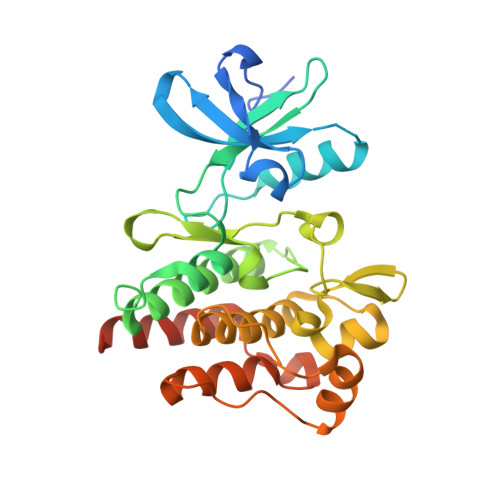Identification and Optimization of Novel Small c-Abl Kinase Activators Using Fragment and HTS Methodologies.
Simpson, G.L., Bertrand, S.M., Borthwick, J.A., Campobasso, N., Chabanet, J., Chen, S., Coggins, J., Cottom, J., Christensen, S.B., Dawson, H.C., Evans, H.L., Hobbs, A.N., Hong, X., Mangatt, B., Munoz-Muriedas, J., Oliff, A., Qin, D., Scott-Stevens, P., Ward, P., Washio, Y., Yang, J., Young, R.J.(2019) J Med Chem 62: 2154-2171
- PubMed: 30689376
- DOI: https://doi.org/10.1021/acs.jmedchem.8b01872
- Primary Citation of Related Structures:
6NPE, 6NPU, 6NPV - PubMed Abstract:
Abelson kinase (c-Abl) is a ubiquitously expressed, nonreceptor tyrosine kinase which plays a key role in cell differentiation and survival. It was hypothesized that transient activation of c-Abl kinase via displacement of the N-terminal autoinhibitory "myristoyl latch", may lead to an increased hematopoietic stem cell differentiation. This would increase the numbers of circulating neutrophils and so be an effective treatment for chemotherapy-induced neutropenia. This paper describes the discovery and optimization of a thiazole series of novel small molecule c-Abl activators, initially identified by a high throughput screening. Subsequently, a scaffold-hop, which exploited the improved physicochemical properties of a dihydropyrazole analogue, identified through fragment screening, delivered potent, soluble, cell-active c-Abl activators, which demonstrated the intracellular activation of c-Abl in vivo.
Organizational Affiliation:
Medicines Research Centre , GlaxoSmithKline R&D , Gunnels Wood Road , Stevenage , Hertfordshire SG1 2NY , U.K.



















